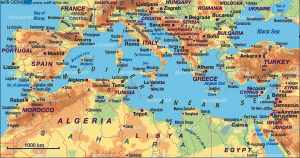 Do you think you need to eat to be polite – even if you don’t want the food or you’re totally stuffed – because you don’t want to be rude or hurt someone’s feelings?
Do you think you need to eat to be polite – even if you don’t want the food or you’re totally stuffed – because you don’t want to be rude or hurt someone’s feelings?
You really don’t have to feel obliged to eat out of courtesy – especially if you don’t want the food or you’re full. Ditch the guilt – the calories are going into your mouth, not your host’s, your Mom’s, or your friend’s.
Who Are Food Pushers?
Food pushers pile your plate high with food and act insulted if you ask them to stop. Food pushers, despite your protests, insist that you try every kind of food. Food pushers look at your plate and loudly ask why you’re not eating, if you don’t like something, or if you’re on a diet. Food pushers are thorns in your side and don’t necessarily have your best interest at heart. Food pushers can be your partner, friend, parent, or sister. They may or may not realize what they’re doing. What’s important is that you do.
What’s Your Game Plan?
You need to have a game plan for how you’re going to deal with food pushers. A plan sounds clinical but it doesn’t have to be. It could be your saving grace. Think about how you want to handle yourself in the face of food, family, someone’s special stuffing, your family’s traditional sweet potato casserole (which you may hate but always feel obliged to eat), and the array of desserts staring at you from seemingly every table and counter.
One size – or one plan – does not fit all. You need to choose the plan of action and strategy that works best for you and your circumstances.
What are you going to do or say to the food pushers? Are you going to stand firm and say you don’t want to eat the stuffing because you’re watching your carbs – and then steel yourself for the snarky look? Are you going to say that you really need to watch your weight – or that you can’t eat that much – or that you get sleepy when you overeat and, unfortunately, you really have some work that you have to finish and you need to be alert?
Are you going to say that you really don’t care for pie – pumpkin or otherwise – and that your favorite dessert is fruit? If someone really hounds you about trying certain foods you can always claim an allergy or that you’re eating heart healthy (claiming an upset stomach might buy you an early exit or other guests avoiding you like the plague).
You’re In Charge
It’s so easy to default to shoving food in your mouth when faced with food pushers and potentially annoying family members, some of whom seem spend the entire time carping at one another.
Nothing is engraved in stone but if you have an idea about what you want to accomplish and how to go about it you’ll be far less likely to nibble and nosh all day and night. You’re the one in charge of what and how much food goes into your mouth. Take charge and remain in charge of you.






